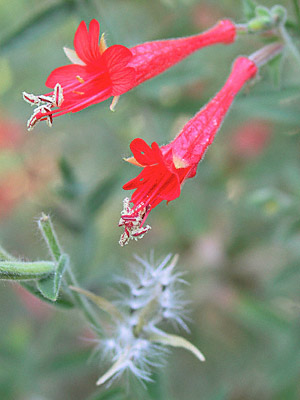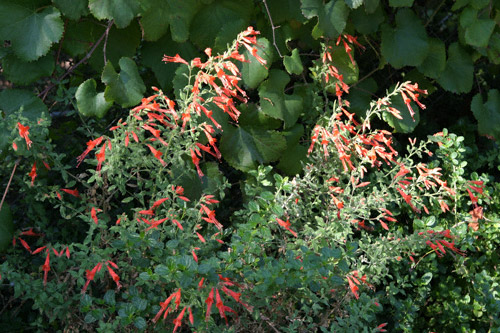
California Fuchsias (as Zauschnerias are commonly known) cover large stretches of our garden, filling in gaps between larger plants and otherwise spreading randomly around the property. In contrast to most fuchsias, they are very drought tolerant. In late summer through fall, their brilliant scarlet flowers emerge in profusion from these loose, relatively low plants (typically a foot tall), much to the delight of hummingbirds.
If allowed to go to seed (the white fluff in this photo), song birds such as goldfinches will happily feast. The seed that escapes will start new colonies; they also spread by roots. The plants will turn brown in the winter, at which point you can give them a severe haircut, and the process will repeat next year – on a larger scale.
We have over a dozen species and selections of Zauschneria (also known as Epilobium), and frankly, we've lost track of exactly who is who. In general, Z. californica is the most common. Z. cana has much thinner, grayish leaves and is even more drought tolerant, whereas Z. latifolia has broader leaves and needs more water. Of the selections in our garden, the most spectacular bloomer is ‘Route 66’; ‘Topanga’ is taller and is most visited by goldfinches; the rare ‘Mattolle Canyon’ is the slowest spreader.
